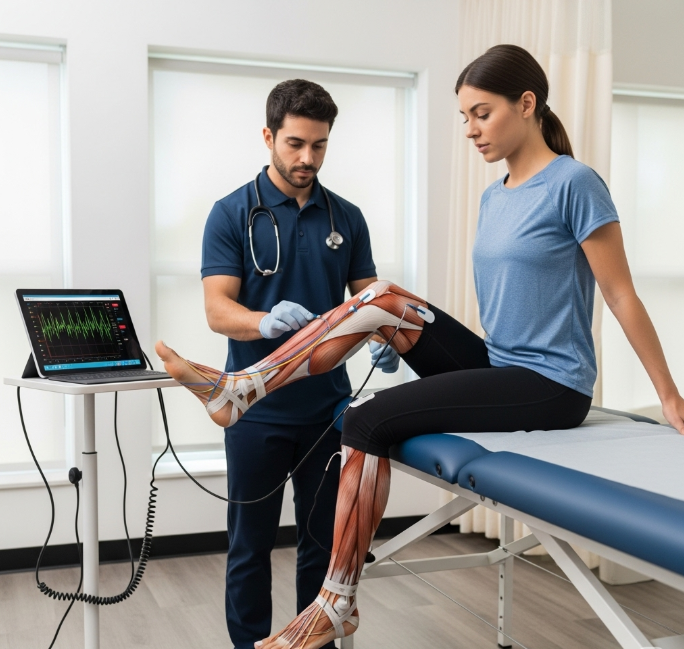Foot drop can dramatically affect your life, making everyday activities like walking a challenge. Imagine the simple
act of taking a step becoming difficult, increasing your risk of falls, and limiting your independence. If you're
seeking a path towards recovery, EMG biofeedback offers a promising solution within the realm of physiotherapy.
This innovative technique empowers you to regain control and improve your gait, transforming physiotherapy,
one patient at a time.
Understanding EMG Biofeedback
EMG biofeedback is a powerful rehabilitation technique that uses sensors to detect the tiny electrical signals
your muscles produce. These signals, often imperceptible to you, are translated into visual or auditory feedback,
helping you become aware of how your muscles are working. This awareness is the first step in regaining
control. The technique tries to transduce a patient’s physiological electrical response—which would typically be
subliminal—into an aural or visual stimulus, in terms of limb function recovery after stroke this is normally in the
form of an electromyogram. This records a difference in potential along the length of a muscle using electrodes
over the skin surface. After amplification, the signal is displayed in a simplified format to the patient, for example,
by hearing a change in auditory tone or by seeing a response on an oscilloscope display.
Foot Drop: Impact on Mobility and Daily Life
Foot drop is the inability to lift the front part of your foot. This can significantly affect your ability to walk, impacting
your balance and increasing the risk of falls. Simple actions like climbing stairs, driving, or even participating in
sports become difficult. It can also limit your ability to enjoy everyday activities, leading to frustration and decreased
self-esteem. Foot drop often stems from nerve damage, muscle weakness, or neurological conditions such as stroke,
multiple sclerosis, or cerebral palsy. Common causes include fibular nerve injury, as well.
How EMG Biofeedback Retrains Muscles for Foot Drop Recovery
EMG biofeedback can be instrumental in retraining the muscles responsible for dorsiflexion, which is the action of
lifting your foot upwards. Specifically, it targets muscles like the tibialis anterior. By providing real-time feedback,
you can consciously control and strengthen these muscles, taking an active role in your recovery. The process
of muscle retraining involves the concept of neuroplasticity, where repeated practice with feedback strengthens
neural pathways. During an EMG biofeedback session, sensors are placed on the affected muscles. As the patient
attempts to lift their foot, the EMG unit translates the muscle activity into a visual or auditory signal. This immediate
feedback loop allows the patient to make subtle adjustments in their muscle activation, gradually improving their
ability to lift the foot.
The EMG Biofeedback Treatment Process
Physiotherapist will use the EMG data to create a treatment plan specifically designed for your
unique needs. This personalized approach ensures that your therapy is both effective and safe. The initial
assessment process involves the physiotherapist evaluating the patient's muscle strength, range of motion,
and functional abilities. The treatment process typically involves placing EMG sensors on the relevant muscles,
receiving visual or auditory feedback during exercises, and gradually increasing the difficulty of the exercises
as muscle control improves. A qualified physiotherapist guides the patient through these exercises, ensuring
proper technique and monitoring progress. In some cases, remote physios may be involved, offering guidance
and support through telehealth platforms, ensuring accessibility and convenience.
Conclusion
If you or someone you know is struggling with foot drop, we encourage you to consult with a qualified physio-
therapist to explore if EMG biofeedback could be the right solution for you. We're committed to transforming
physiotherapy, one patient at a time, with personalized care powered by innovation. You can also find more
information on the effectiveness of EMG biofeedback The effectiveness of EMG biofeedback in the treatment
of arm function after stroke.
